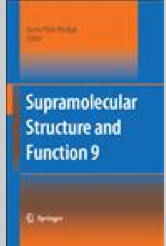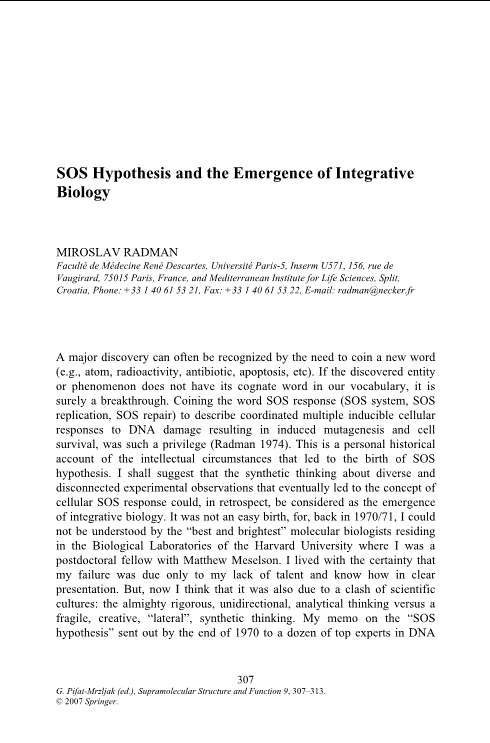 click the cover if you need this book
click the cover if you need this book
chapter: SOS Hypothesis and the Emergence of Integrative Biology
Abstract
A major discovery can often be recognized by the need to coin a new word (e.g., atom, radioactivity, antibiotic, apoptosis, etc). If the discovered entity or phenomenon does not have its cognate word in our vocabulary, it is surely a breakthrough. Coining the word SOS response (SOS system, SOS replication, SOS repair) to describe coordinated multiple inducible cellular responses to DNA damage resulting in induced mutagenesis and cell survival, was such a privilege (Radman 1974). This is a personal historical account of the intellectual circumstances that led to the birth of SOS hypothesis. I shall suggest that the synthetic thinking about diverse and disconnected experimental observations that eventually led to the concept of cellular SOS response could, in retrospect, be considered as the emergence of integrative biology. It was not an easy birth, for, back in 1970/71, I could not be understood by the “best and brightest” molecular biologists residing in the Biological Laboratories of the Harvard University where I was a postdoctoral fellow with Matthew Meselson. I lived with the certainty that my failure was due only to my lack of talent and know how in clear presentation. But, now I think that it was also due to a clash of scientific cultures: the almighty rigorous, unidirectional, analytical thinking versus a fragile, creative, “lateral”, synthetic thinking. My memo on the “SOS hypothesis” sent out by the end of 1970 to a dozen of top experts in DNA repair and mutagenesis inspired no answer. Fortunately, I started to work on Meselson’s project of mismatch repair in genetic recombination.


